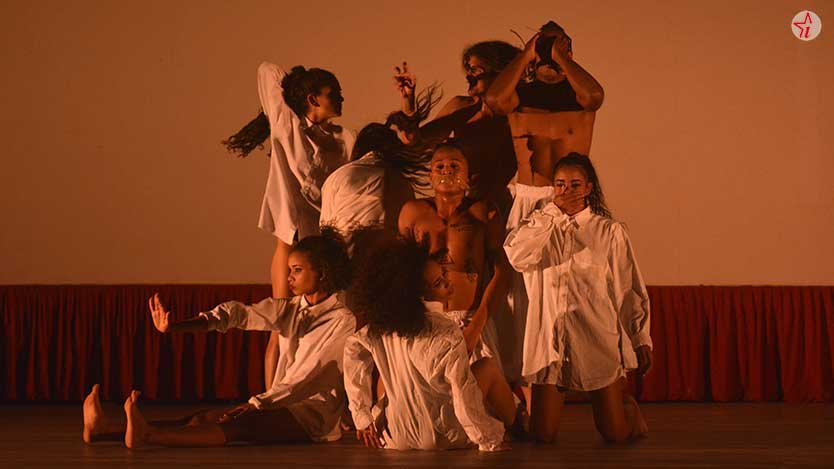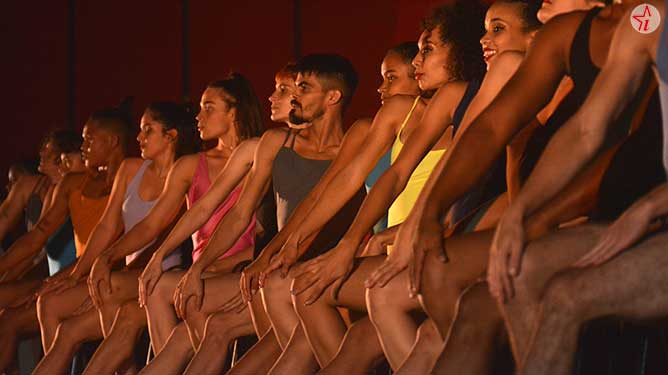
Rosario Cárdenas Company and Ensemble gave their hearts in each movement and danced with individuality and skill, a priori, the first conclusions after an hour of contemporary dance, in which they shared the stage. Then, it would have to be said that the possibility of perceiving and interpreting each movement in the front row must have left the audience full of emotions and with several ideas floating around.
It is a reality that not every day we can enjoy contemporary dance here at the highest level and, at the same time, witness the emergence of the first Ciego de Ávila Company that ventures with determination and systematicity in this style. Expectations were at their highest point and were fulfilled, in my opinion, energetically.
The opening of the night corresponded to the Rosario Cárdenas Company that interpreted several fragments of highly applauded pieces and already anthological in its repertoire.
The first was Noctario, a solo of deep conflict and intimacy; from they extracted a duo from Zona-Cuerpo that explores the body as an object of desire between two men; Combinatoria en guaguancó showed a fragmented and contemporary reworking of the rumba; and La Gaviota, was a defense of what is different and the ability to adapt.
The selection of these fragments by the teacher Rosario Cárdenas, National Dance Award 2013, allowed us to look back on her repertoire and rediscover it in its many facets. By the time of Ensemble's debut, eyes and ears were already trained to applaud the good.

The refined technique of the dancers of the Rosario Cárdenas Company was a school
X-DAD, with choreography by Andy Rodríguez and general direction by Carlos Beckford, has as its central conflict the physical and psychological violence that surrounds human relationships, rooted in the fabric of society and, many times, silenced or ignored.
That is why when the dancers seem to hit each other, the gestural impact is overwhelming. When they cover their mouths with their hands, insecurity and a defensive attitude are interpreted. They close their eyes and cover their ears to ignore everything that surrounds and disturbs them; and when they are tied up with tape, the feeling of being imprisoned suffocates and shudders. They show a coherent stage discourse with a high technical level.
The choreography begins with a calm rhythm, almost as if they had little to show; but then it gains intensity and dynamism with the complex figures drawn on stage, the fresh scenes shared between men and women, the strength of each movement, and the repeated charges and falls, which build a range of relationships not unrelated to aggressiveness.
There is strength and desire, love and heartbreak, pain, cyclical violence, momentum and skill, and a growing rhythm that leaves the best for last. In addition, a game with the gender and the roles of the dancers, which could well allude to the search for equity on that immense stage that is daily life. It happens when the men change their wardrobe and wear a kind of white skirt, while the women keep the shirt long sleeves.
The musical selection was another of the gains of the work because it came to add feeling and voice to the movement. This is how Atoms for peace, Paul Mauriat and Raymond Mamoudy, Chabuca Granada and Concha Buika were heard. However, the same cannot be said of the lighting design due to the conditions of the Carmen movie theater, in the main city, not designed for shows of this type. There was a lack of intensity, colors and shapes to enrich the staging.
Undoubtedly, the Ensemble boys had double responsibilities and challenges because sharing the stage with one of the most important contemporary dance companies in the country and putting into practice what they learned in these days of workshops is easier said than done. As if that were not enough, members of both casts danced together fragments of Deseo y Tributo a El Monte to close with a more relaxed and rhythmic proposal.

Fresh and humorous, the shared fragment of the work Desire
X-DAD is not a finished proposal nor is the technique of the Ensemble dancers settled matter, but what was seen in their debut is hardly an announcement of what they can be. Meanwhile, we are discovering the magic of contemporary dance in Ciego de Ávila that filled all the lunettes of the Carmen cinema, despite the cold of Saturday night in a city that has already lost the habit of theaters and shows.
The magic of having persisted even when efforts, resources, space for presentations and references for continuity have been lacking. The magic is having Ensemble and betting on it.




